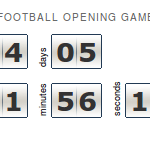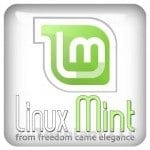 Editor’s Note: This article is part of the Tales of A Linux Switcher series.
Editor’s Note: This article is part of the Tales of A Linux Switcher series.
As part of my on-going switch to Ubuntu 12.04 from Mac OS X, I ran into an issue where my cdrom device was not being mapped properly in the OS.
Everything works as desired except for one little thing: the eject key on the Apple Aluminum USB keyboard was not triggering the eject sequence of the built-in slot loading SuperDrive.
I assumed that there would be a device mapped to the actual drive using a link to /dev/cdrom. This didn’t turn out to be the case. When using the eject command from a terminal I received the following:
$ eject eject: unable to find or open device for: `cdrom'
When I did a directory list to find any applicable cdrom device entries in the udev root (/dev) I got the following:
$ udevadm info --root /dev root@foreandy-iMac:~# ls -l /dev/*cd* ls: cannot access /dev/*cd*: No such file or directory
In order to determine exactly which device was being used for the optical drive, I looked at the output from system’s cdrom device entry:
$ cat /proc/sys/dev/cdrom/info CD-ROM information, Id: cdrom.c 3.20 2003/12/17 drive name: sr0 drive speed: 24 drive # of slots: 1 Can close tray: 1 Can open tray: 1 Can lock tray: 1 Can change speed: 1 Can select disk: 0 Can read multisession: 1 Can read MCN: 1 Reports media changed: 1 Can play audio: 1 Can write CD-R: 1 Can write CD-RW: 1 Can read DVD: 1 Can write DVD-R: 1 Can write DVD-RAM: 0 Can read MRW: 0 Can write MRW: 0 Can write RAM: 1
The next step was to create the symbolic link in the device root to map cdrom to the appropriate device as listed in the above output:
$ sudo ln -s /dev/sr0 /dev/cdrom $ ls -l /dev/*cd* lrwxrwxrwx 1 root root 8 Jul 30 09:58 /dev/cdrom -> /dev/sr0
Now I can use both command line utilities to work with the optical drive as well as the built-in eject key on my keyboard.
If you want a lot more detail on this issue check out this bug comment. While not specifically dealing with a Mac, the issues and solution are the same.
 Editor’s Note: This article is part of the Tales of A Linux Switcher series.
Editor’s Note: This article is part of the Tales of A Linux Switcher series.
If you are a graphic designer or developer, or you just have a need to edit images, a mainstay of your Linux toolbox is likely to be the Gimp.
If you are coming from the Mac or Windows world, it is probable that you have used Adobe’s Photoshop program to achieve your image editing needs in the past. Having used Photoshop and Gimp extensively over the past decade, I can tell you that one of the features I liked about the Photoshop environment on Windows has been the unified window. All the palettes, toolbars and editing windows exist inside a single, unified window.
I always missed this when using Gimp on Linux (or the other OS as well, since Gimp is available for all three ![]() ). One of the main feature draws for me to the latest Gimp release, version 2.8, was this single line in the release notes:
). One of the main feature draws for me to the latest Gimp release, version 2.8, was this single line in the release notes:
GIMP 2.8 introduces an optional single-window mode.
Awesome! Of course, Gimp 2.8 is not in the current Ubuntu 12.04 repository (Note: Ubuntu 12.10 has version 2.8 listed in the repository!) :
$ apt-cache policy gimp gimp: Installed: (none) Candidate: 2.6.12-1ubuntu1 Version table: 2.6.12-1ubuntu1 0 500 http://us.archive.ubuntu.com/ubuntu/ precise/main amd64 Packages
Not to fear! Using the following set of commands you can successfully obtain the Gimp 2.8 software as well as a compatible version of the plugin registry:
sudo add-apt-repository ppa:otto-kesselgulasch/gimp sudo apt-get update
As you see from a policy check, after adding the repository and updating the cache, you will now be receiving the Gimp package and the updated plugin-registry from the new PPA:
$ apt-cache policy gimp gimp: Installed: (none) Candidate: 2.8.0-1ubuntu0ppa6~precise Version table: 2.8.0-1ubuntu0ppa6~precise 0 500 http://ppa.launchpad.net/otto-kesselgulasch/gimp/ubuntu/ precise/main amd64 Packages 2.6.12-1ubuntu1 0 500 http://us.archive.ubuntu.com/ubuntu/ precise/main amd64 Packages
$ apt-cache policy gimp-plugin-registry gimp-plugin-registry: Installed: (none) Candidate: 5.20120523-2ubuntu0ppa9~precise Version table: 5.20120523-2ubuntu0ppa9~precise 0 500 http://ppa.launchpad.net/otto-kesselgulasch/gimp/ubuntu/ precise/main amd64 Packages 3.5.4-1 0 500 http://us.archive.ubuntu.com/ubuntu/ precise/universe amd64 Packages
To install it now enter the following:
sudo apt-get install gimp gimp-plugin-registry
Now you have the most recent release!

Editor’s Note: This article is part of the Tales of A Linux Switcher series.
One of the things I have always hated about using Linux is the difference in the base font collection. Many web designers still use the defaults of Arial, Verdana and Georgia. The reasons for this are that these fonts are available on the two main commercial operating systems, Mac OS and Microsoft Windows.
Until the majority of websites support webfonts like Google Web Fonts or Monotype’s fonts.com service, we still need access to the standard MS fonts. For more on this situation, check out the article A Web Designer’s Guide to Linux Fonts by Six Revisions.
Fortunately, these fonts are available for installation on Linux. You can download them directly from the Sourceforge repository or look for the package in your particular distribution.
In Ubuntu you can install them from the Ubuntu Software Center by searching for the package named ttf-mscorefonts-installer or by using the following on the command line (Note: if you install from the command line then you will be prompted to accept the license aggreement in an ncurses interface.):
sudo apt-get install ttf-mscorefonts-installer
Either way, you will end up with the following additional fonts:
- Andale Mono
- Arial Black
- Arial (bold, italic, bold italic)
- Comic Sans MS (bold)
- Courier New (bold, italic, bold italic)
- Georgia (bold, italic, bold italic)
- Impact
- Times New Roman (bold, italic, bold italic)
- Trebuchet (bold, italic, bold italic)
- Verdana (bold, italic, bold italic)
- Webdings
To see the difference in the display of websites after the installation, check out the following screenshots from this website.


As you can see the use of these fonts definitely make a difference. Happy surfing!
 Editor’s Note: This article is part of the Tales of A Linux Switcher series.
Editor’s Note: This article is part of the Tales of A Linux Switcher series.
In my search to make the complete switch from the Mac OS (see Tales of a Linux Switcher – Part 1), the biggest research effort has been finding applications that accomplish the same tasks in Linux. Some of these tasks are pretty obvious, e.g., web browsing or email, while others are not quite so ordinary, e.g., filesystem encryption or software development.
So, with all of that in mind, the subject of this particular post is going to be a discussion of some of the common tasks that I set out to handle and the application I chose to fit the bill.
Chapter 2 – Getting it done
When everything is said and done, the important part of using any desktop (or server really) OS is getting what you need to do accomplished. The tasks can be office productivity or software development or just casual web surfing.
The arguments about which OS is better, more secure, more extensible, or more “free” are all great and wonderful, but in the end what matters is getting it done. There are some people that believe that software being free is top priority, while others (like myself) are not as concerned over whether the software is free, cheap, open source, or proprietary, as long as it works to get from point a to point b.
Don’t get me wrong, I like open source software, and it’s even better when it’s FOSS (free, open source software), but when it all shakes out I want a computer setup that I can rely on from day-to-day to do what I need it to do.
Chapter 3 – It’s all about the apps
So in my quest to get to point b, I have found that there are generally any number of application choices to accomplish my tasks in Linux that I did in the Mac OS ecosystem.
Some of the application choices were easy options, like LibreOffice in place of MS Office 2011, while others required more research to replace, e.g., iTunes, 1Password, etc. With each choice I have tried to find an alternative that gave me the closest experience in terms of usability and feature set of the application being replaced.
When looking for alternatives I used Google for basic searching, but I also found the following sites to be of use:
Using those sites in combination with various forum posts and basic searches, I have been able to find software to do most everything I was doing on Mac OS X. Bear in mind that sometimes it’s not quite as easy to set everything up, but I took that as a challenge. There are some instances that presented particular challenges. I will be posting on those individually as time permits.
To see the list I have personally come up, have a gander at my Linux Switcher Software Choices spreadsheet.
As some of you will no doubt have noticed over the years, I am a die-hard Macintosh fan. I have run Windows desktops and servers, as well as Linux desktops and servers over the years, but my true love has always been the Apple Macintosh computers. So it is with some trepidation that I have faced the situation that I no longer have any Macintosh computers of my own.
While the situation was not anticipated, I have faced it head on and am rapidly on my way to filling all my computing needs with the Linux desktop that I have. This is the first of several posts where I will document that process and the solutions that I have come up with to achieve the same goals in my personal computing experience with Linux that I did with the Mac.
Chapter 1 – Choosing a distribution
As a long time Linux user, dating all the way back to running a specialized distribution of RedHat on the 486 PC card in my PowerPC 6100 like some other folks, I am well acquainted with the passionate arguments that can arise among Linux aficionado when the topic of choosing a distribution arises.
In the beginning many of the arguments centered around the needs of various kernel configurations and packaging systems. Do you compile your kernel by hand? Do you go modular or monolithic? Is RPM a better choice than deb? Do you go hard core and start a stage 1 Gentoo install where you have to bootstrap the kernel just to compile and install?
Some of these decisions will be familiar to you and some won’t be. Many of the old arguments don’t apply anymore due to major improvements over the years. Ofttimes the new arguments center around free vs. non-free, Gnome 2 vs. Gnome 3, Gnome vs. KDE, etc.
With all of this in mind, I developed a rather simple set of criteria based on my personal experience with the philosophy Apple has espoused in it’s ad campaigns of “it just works.” Here’s the list I came up with:
- Community involvement
With any OS choice, it is very important that there be a large community of users, comprised of multiple skill levels, that can provide innovative solutions and workarounds for usability problems that can be encountered. - Multiple update tracks
While having a stable only release track makes sense for a production-level environment, as a tech-enthusiast and a geek it is great to have access to testing and unstable release tracks when you want to try something on the bleeding edge. - Robust driver support
It was important that recent hardware support be available. I don’t want to have to wait until a major point release to get something as important as a network card working. - Eye candy
Yes, I know that to a lot of die-hard UNIX guys, the concept of eye candy being a major bullet item for picking a distribution is nuts, but coming from the Macintosh environment, which is arguably one of the most visually appealing, it was important.
 After doing a large amount of research and testing numerous live cd’s, I settled on Linux Mint 13 with the Cinnamon desktop environment. Linux Mint is a Ubuntu-based distribution, which means it traces it’s genealogy back to the grand old distribution of Debian.
After doing a large amount of research and testing numerous live cd’s, I settled on Linux Mint 13 with the Cinnamon desktop environment. Linux Mint is a Ubuntu-based distribution, which means it traces it’s genealogy back to the grand old distribution of Debian.
Ubuntu is known for having a extremely active community base and it has become the distribution of choice for many hardware vendors outside of the server market that are looking to pull Linux users into their product lines.
Being a Ubuntu/Debian based distribution, there are lots of opportunities for bleeding edge development when you want to go there. For example, Oracle’s Java 7 Update 4 is available as a package through a PPA repo.
Also, since Linux Mint 13 is a Gnome 3-base with the sleek, modern looking Cinnamon environment on top, there is plenty of eye candy to go around.
References
- Fischba, S. (1997, June 06). Running linux on ppc/486 card?. Retrieved from http://www.linuxmisc.com/7-freebsd/2fd450d75fd55344.htm
- Lagna, G. (2010, April 23). Apple’s ad campaign, a brief history… Retrieved from http://www.macgasm.net/2010/04/23/apples-ad-campaign-a-brief-history/
- Linux Mint – from freedom came elegance. Ubuntu-based Linux distribution. http://www.linuxmint.com/
- Cinnamon – Love your Linux, Feel at Home, Get things Done! Window manager for Linux. http://cinnamon.linuxmint.com/
- Andrei, A. (2012, January 17). Install oracle java 7 in ubuntu via ppa repository. Retrieved from http://www.webupd8.org/2012/01/install-oracle-java-jdk-7-in-ubuntu-via.html